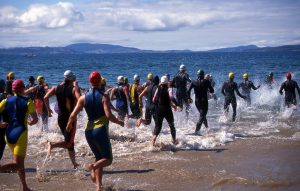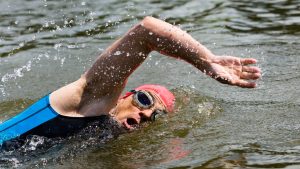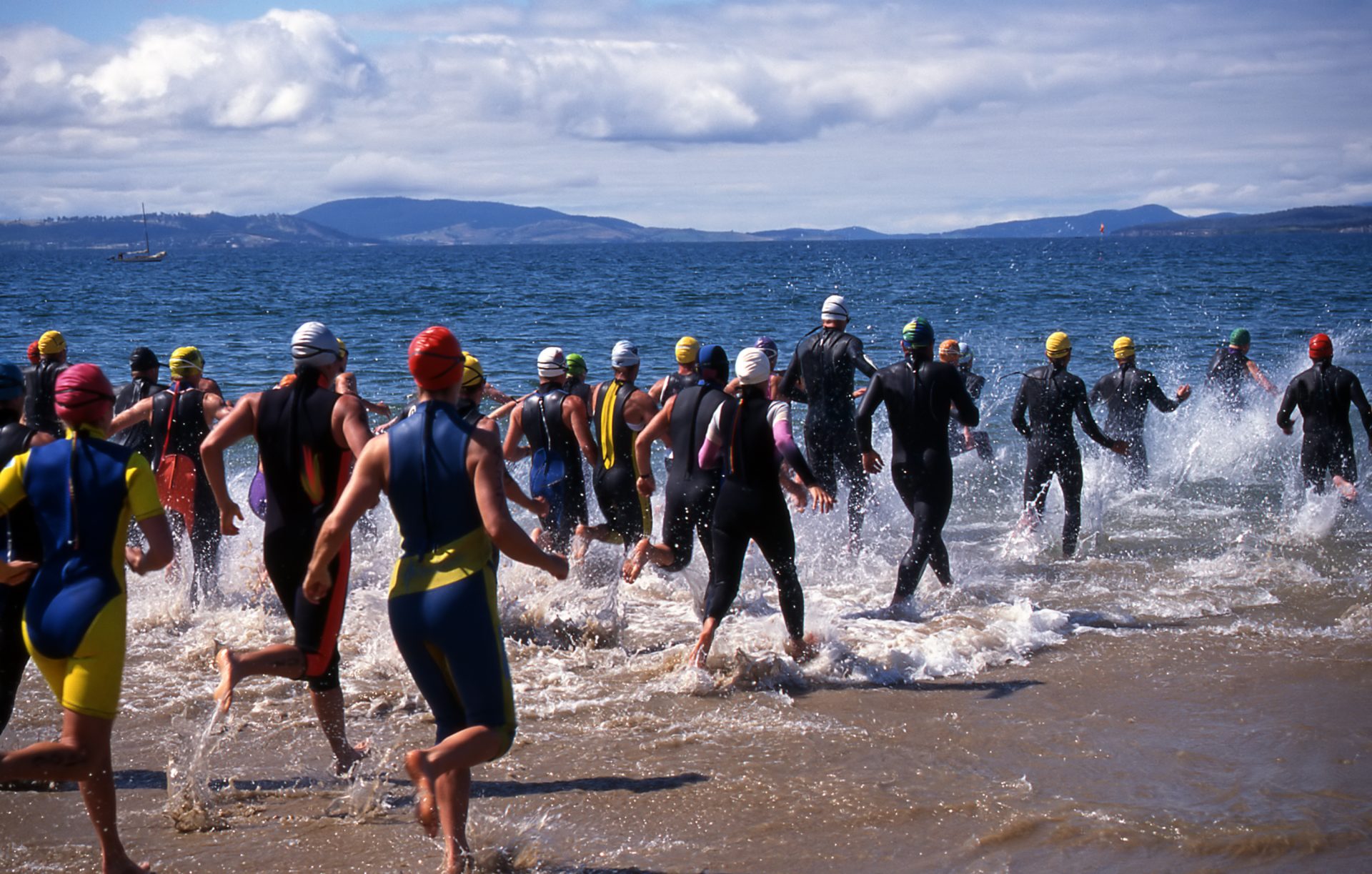Triathlons that begin with a sea swim can be a daunting process. Let’s see if we can help you with that…

According to the Ordnance Survey, Great Britain’s coastline stretches to a rather lengthy 11,073 miles. That would get you from London to Sydney with over 500 miles to spare.
It’s why open-water sea swims and open-water triathlons are so numerous and so popular. They’re also one of the most challenging bodies of water you can swim and that’s predominantly down to the relentless waves.
Yes, sometimes it’s dead calm, but other times can see you fighting shore breakers and a swell that makes sighting very difficult, which can mess with your breathing and stroke patterns. Thankfully, there are solutions…
Increase stroke turnover
Classic pool swimmers have high elbows, slower cadence and a glide at the front of the stroke. Great for a flat swimming pool, but not as efficient in choppy open water.
Adapt your stroke for the conditions, by increasing arm turnover, having a straighter arm recovery, and a strong, quick catch.
Using a Finis Tempo trainer will teach you to generate a faster arm turnover in pool sessions. Start with 50m and 100m stretches because it can be tiring.
Favourite for women’s triathlon gold in Rio, Gwen Jorgensen, uses one, and if it’s good enough for Gwen…
Keep that chin up
Improve your catch with the heads-up drill. This is where your front-crawl stroke is tweaked slightly by keeping your chin on the surface of the water and eyes pointing forward. This also helps with sighting.
Add this drill to all of your swim warm-ups.
Bilateral breathing

The waves and chop mean breathing to your favoured side might be impossible, so you should practise bilateral breathing (breathing to both sides). This takes a bit of practice to master but it’s worth persevering with.
In a pool or out in open water, swim 100m sections and vary breathing. So one 100m hit would be breathing every three, five, seven, five and then three strokes. Another would be every two, four, six, four and two strokes. Change which side you breathe to for improved versatility.
Speedy start
Sea swims will be beach starts, and while you can’t specifically practise this in the pool, you can practise diving and the transition from standing to swimming. In the pool, complete sets of 50m from the deep end with a dive start, before climbing out and repeating. This in-and-out template will replicate the heart-rate peaks experienced on the day.
Right, now all you need to do is put in the practice and you’ll conquer the open-water… which will still leave the bike and run, of course.
Happy training!
Blog post written by James Witts. James is a writer and editor specialising in endurance sport, health & fitness, outdoor adventure and sports science.











